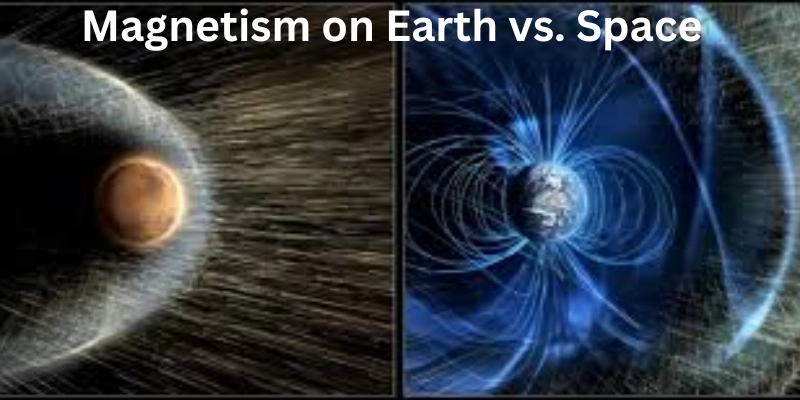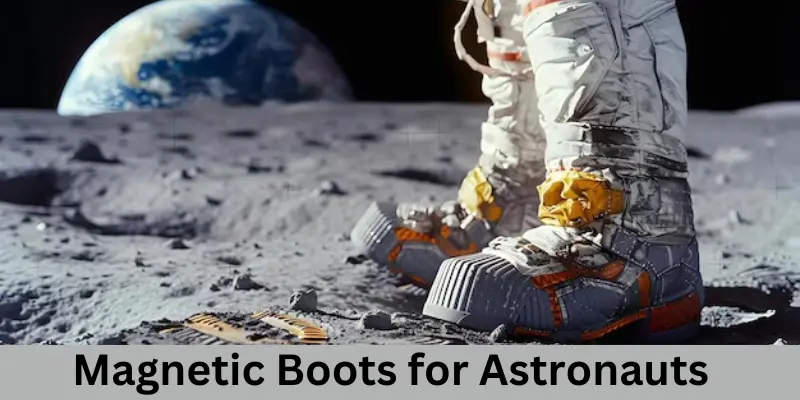Does Magnetism Work in Space – Application and Benefits
Updated: 08 Jan 2025
423
Have you ever wondered if magnets work in space? We know that magnets stick to things like refrigerators here on Earth, but what happens when there’s no gravity or air? In this article, we’ll explore how magnetism works in space, why it’s important for space travel, and what scientists have discovered about it. Let’s get ready to learn some fun and exciting facts about magnets beyond our planet.
Understanding Magnetism
Magnetism is a special force that we can’t see, but it’s very powerful. It pulls some objects, like paper clips and nails, toward a magnet. This force happens because of something called a magnetic field. A magnetic field is an invisible area around a magnet where the force can pull or push certain metals.
There are two types of magnets you might hear about:
- Permanent magnets: These are magnets that always stay magnetic. A fridge magnet is a good example.
- Electromagnets: These are magnets that only work when electricity flows through them. Scientists and engineers use these magnets in machines like cranes to lift heavy objects.
Magnetism happens because of tiny particles inside things called atoms. Atoms have little pieces called electrons that spin around. When many electrons spin in the same direction, they create a magnetic force.
Magnetism on Earth vs. Space
1. Magnetism on Earth
- Earth has a giant magnetic field that acts like a huge invisible magnet. This magnetic field comes from deep inside the Earth, where molten metal moves around and creates a force that we call magnetism. This is why compasses always point north they follow the Earth’s magnetic field!

2. Magnetism in Space
- In space, there is no air, no gravity pulling things down, and no atmosphere like on Earth. But guess what? Magnetism still works! Magnetic forces do not need air or gravity to work because they are part of the natural properties of magnets. However, since space is a vacuum (empty of matter), magnetic fields behave differently. They aren’t blocked or weakened by air or other materials like they are on Earth.
Differences between Earth and Space
- On Earth, magnets feel the pull of the planet’s magnetic field.
- In space, magnets don’t have a big magnetic planet nearby, so they work without that extra pull.
- Without air or gravity in space, magnets can float freely while still sticking to metal objects.
Scientific Evidence of Magnetism in Space
Have you ever wondered if magnets work in space? The answer is yes, and we have proof! Let’s look at some fun facts and experiments that show how magnetism works even outside our planet.
- Magnets Don’t Need Gravity: Unlike many things that depend on gravity, magnets do not need it to work. Magnetism is a force that comes from the tiny particles inside certain materials. This force works no matter where you are whether on Earth or in the vacuum of space.
- Experiments by Astronauts: Astronauts have carried magnets with them on space missions to see how they behave. One famous astronaut, Richard Garriott, tested magnets in space. He showed that even without gravity or air, the magnetic force could still pull metal objects together.
- Magnetic Fields Around Planets: Scientists use special tools called magnetometers to study the magnetic fields of planets. These tools help us understand how planets like Earth, Jupiter, and Saturn protect themselves from harmful solar winds. Even in space, magnetic fields are powerful enough to be measured and studied.
- Spacecraft Use Magnetism: Magnets are used in spacecraft to help control their direction. Engineers use something called a magnetorquer, which interacts with Earth’s magnetic field to move satellites. This is a clever way to steer without needing fuel.
By testing magnets and using them in spacecraft, scientists have gathered plenty of evidence that magnetism works in space. Isn’t that amazing? Now you know that this invisible force goes wherever we go even among the stars.
Applications of Magnetism in Space Exploration
Magnetism is an invisible force that can pull or push certain materials like iron or steel. In space, where there is no gravity like on Earth, magnets are super helpful for astronauts and scientists. Here are some exciting ways magnetism is used in space exploration:
- Keeping Tools and Objects in Place
- In space, things float because there’s no gravity! Magnets help astronauts keep their tools from drifting away by attaching them to magnetic strips or boards inside the spacecraft.
- Navigation with Magnetometers
- Spacecraft use special instruments called magnetometers to detect magnetic fields. These tools help scientists study the magnetic fields of planets like Mars and Jupiter to learn about their structure and core.
- Protecting Spacecraft from Space Radiation
- Magnetic shields can be used to protect spacecraft from harmful cosmic rays and solar winds. These magnetic fields act like a protective bubble, just like Earth’s magnetic field shields us from the sun’s radiation.
- Collecting Space Dust and Samples
- Magnets are used to gather tiny bits of metal-rich space dust during space missions. This helps scientists study the composition of other planets and the Moon.
- Magnetic Boots for Astronauts
- Astronauts wear special boots with magnets to help them stay attached to the floor of the spacecraft while floating in zero gravity. This makes it easier to move around and work without drifting away.

Benefits of Magnetism in Space
| Advantages of Magnetism in Space |
|---|
|
Drawbacks of Magnetism in Space
| Disadvantages of Magnetism in Space |
|---|
|
FAQs About Does Magnetism Work in Space?
What is magnetism?
- Magnetism is a force that can attract or push away objects. It happens because of tiny particles inside certain materials called magnets. Magnets can pull metal objects like paper clips or nails.
Does magnetism work the same way in space as it does on Earth?
- Yes! Magnetism works in space just like it does on Earth. However, there are no air or gravity in space to affect how magnets work. This means magnets in space can work freely, but in space, there are other things like radiation that can influence them.
Why do astronauts care about magnetism in space?
- Astronauts use magnetism in space to help with navigation and to study planets. Some spacecraft use magnets to steer in space, and scientists also use special instruments called magnetometers to measure magnetic fields on other planets.
Can magnets work in space without air?
- Yes! Magnets don’t need air to work. Magnetism is a force that can act through empty space, which is called a vacuum. That’s why magnets can still work in space even though there’s no air around.
How do magnets help in space exploration?
- Magnets are used in spacecraft to keep certain parts in place and help with movement. They are also used in scientific instruments to study the magnetic fields of planets, moons, and stars.
Do magnets in space act the same as magnets on Earth?
- Yes, magnets in space behave similarly to those on Earth, but there are no weather or air pressure changes to affect them in space. However, space is extremely cold, and that can sometimes make magnets weaker or stronger, depending on the type of magnet.
Are there any special challenges with using magnets in space?
- Yes, space is really cold and filled with radiation, which can sometimes affect magnets. Scientists need to make sure the magnets they use in space can handle these extreme conditions.
Can magnets be used to power things in space?
- Magnets help power things indirectly in space. For example, magnets are used in the motors that make spacecraft move. They’re also part of some machines that create electricity in space!
Conclusion
Magnetism does work in space, just like it does on Earth! Even though space is very different from our planet, magnets can still create magnetic fields in space. Scientists use magnets in space to learn more about planets, stars, and even space missions. So, next time you think about space, remember that magnets play an important role in helping us understand the universe better.
Please Write Your Comments